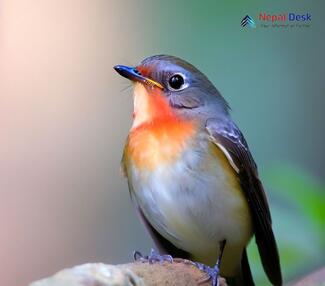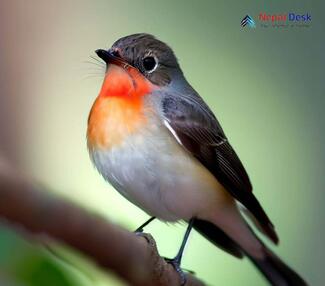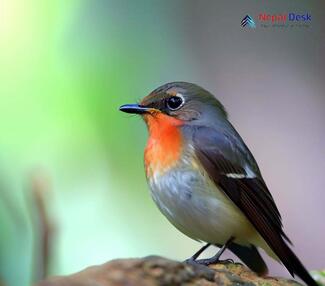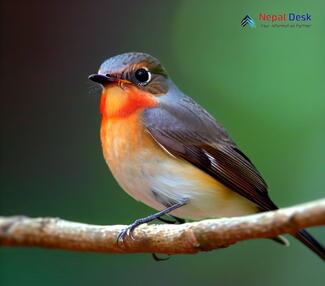The natural world is filled with an incredible array of fascinating birds, each with their unique features and quirks. Among these winged wonders is the enchanting Red-breasted Flycatcher (Ficedula parva), a small passerine that captures the hearts of birdwatchers and nature enthusiasts alike. In this comprehensive article, we will delve into the taxonomy, physical features, habitat, diet, presence in Nepal, and an interesting point about this captivating species.
Taxonomy and Physical Features
Belonging to the family Muscicapidae, the Red-breasted Flycatcher falls under the genus Ficedula. Typically measuring 11-13 cm in length with a wingspan of 18-21 cm, these birds boast a striking appearance that sets them apart from other flycatchers. Males exhibit a deep reddish-orange throat and breast during breeding season, while their upperparts exhibit a grayish-brown hue and their underparts display a soft whitish color. Females showcase more muted shades of brown on their upperparts and pale buff on their underparts.
Habitat and Diet
These agile birds favor deciduous forests, orchards, parks, and gardens across a range extending from Europe to Central Asia. They prefer environments with dense vegetation to nesting sites offering ample cover like tree cavities or crevices. As insectivores, Red-breasted Flycatchers primarily feed on insects such as flies, aphids, beetles, caterpillars, and other small arthropods. During migration seasons and winter months, they can also consume seeds or berries when insects are scarce.
Presence in Nepal
Nepal's diverse landscape creates the perfect home for countless bird species and serves as an essential migratory passage for many others. The Red-breasted Flycatcher is no exception, with sightings recorded in various regions across the country, particularly in and around protected wildlife areas and national parks. Birdwatchers and nature enthusiasts visiting Nepal's hilly forests from September to April are more likely to spot these beautiful birds amid the lush foliage.
Interesting Point: Unique Song Structure
One aspect of the Red-breasted Flycatcher that makes it stand out from many other bird species is its song structure. These birds have a unique ability to produce an extensive range of songs, with each individual having its distinct song types. This complex vocalization serves essential functions, acting as both territorial calls to ward off potential rivals and as means of attracting mates during breeding season.
By exploring the captivating world of the Red-breasted Flycatcher, we gain a greater appreciation for nature's avian treasures. Armed with this knowledge, we hope your next encounter with this charming bird in Nepal or elsewhere brings newfound excitement and awe for the extraordinary complexities of the wild world beyond our daily lives.




